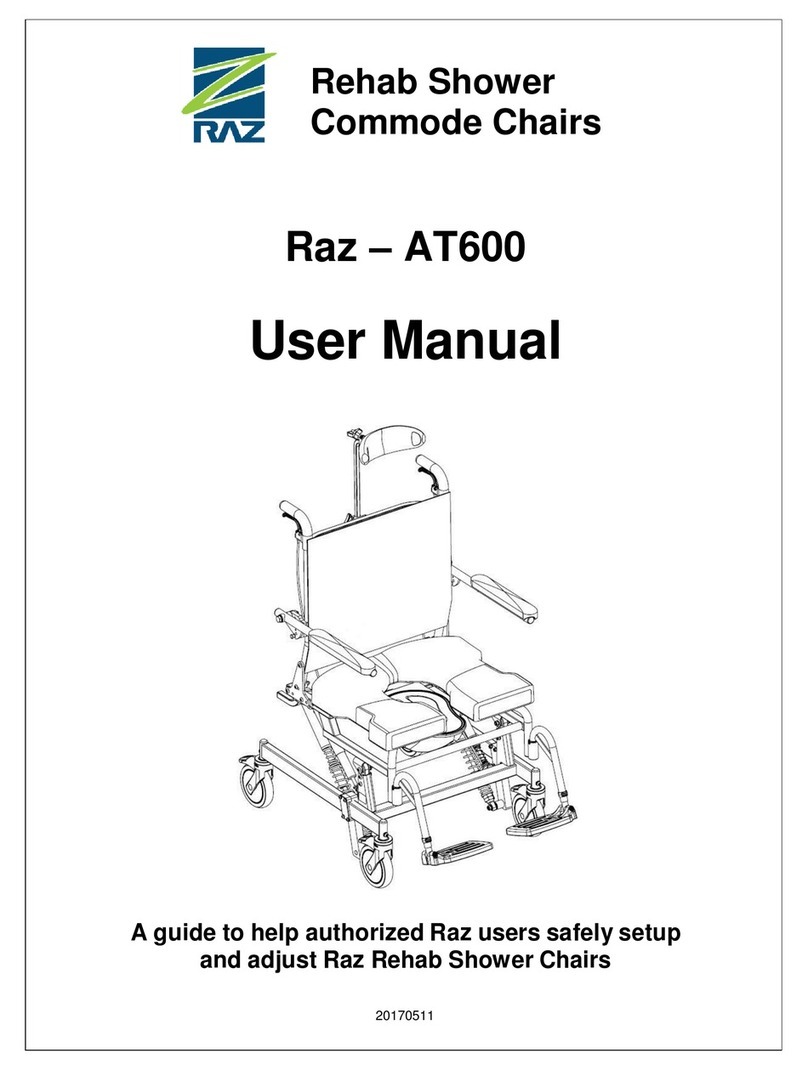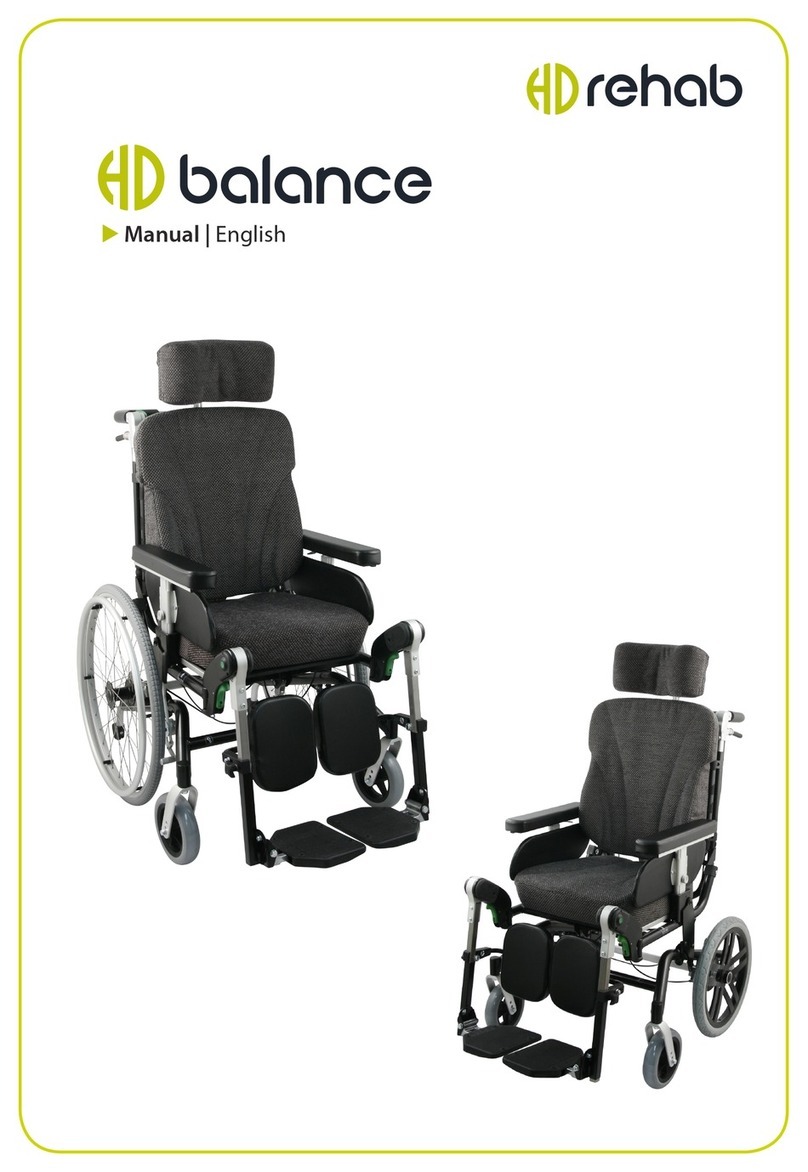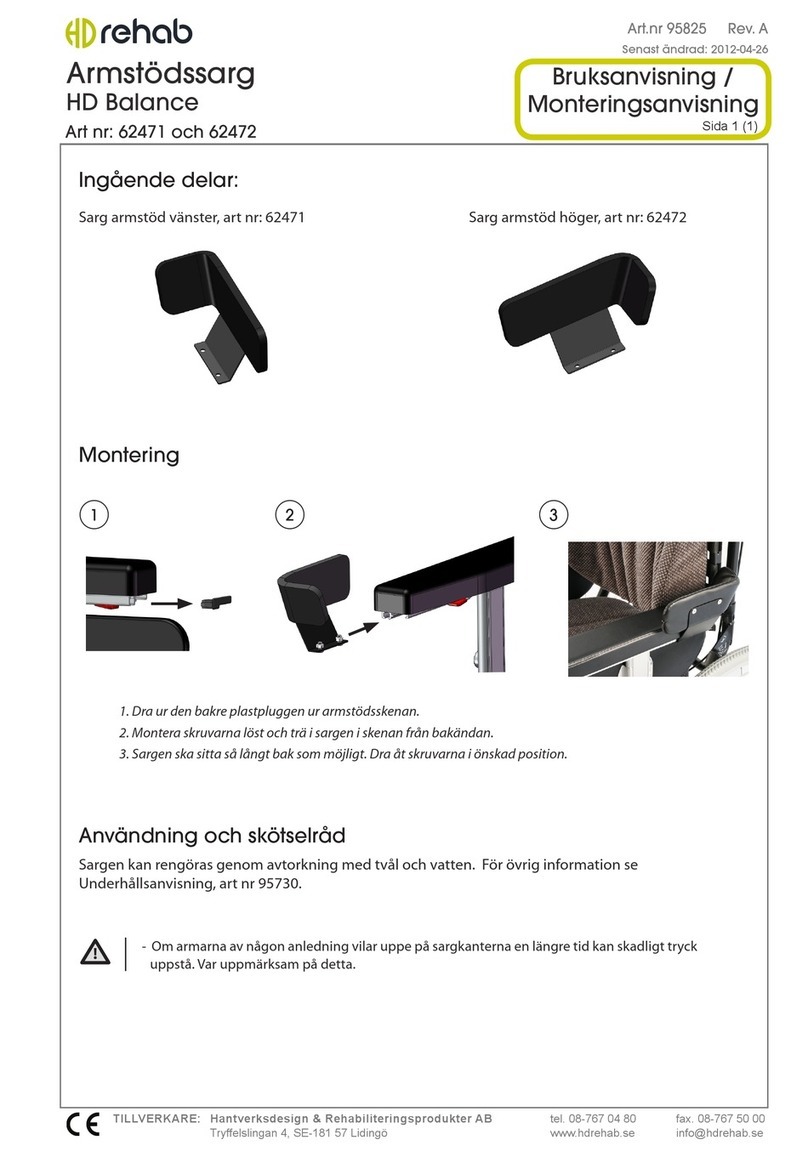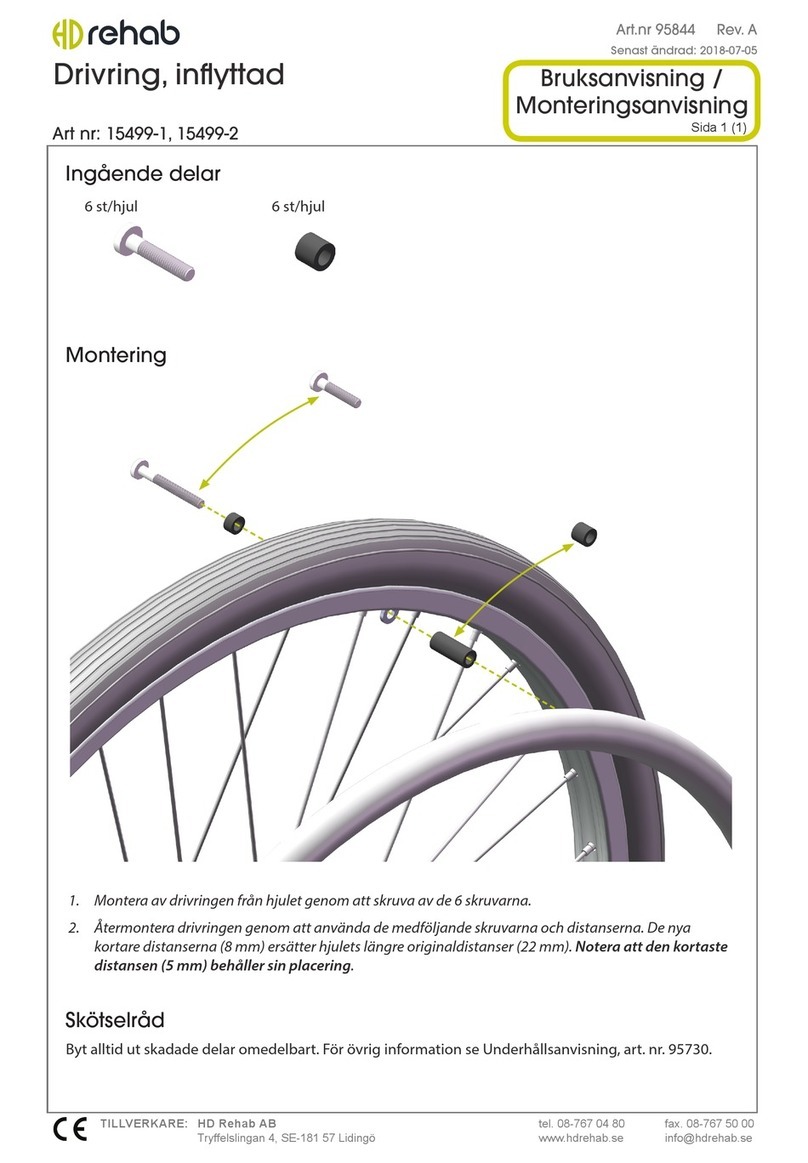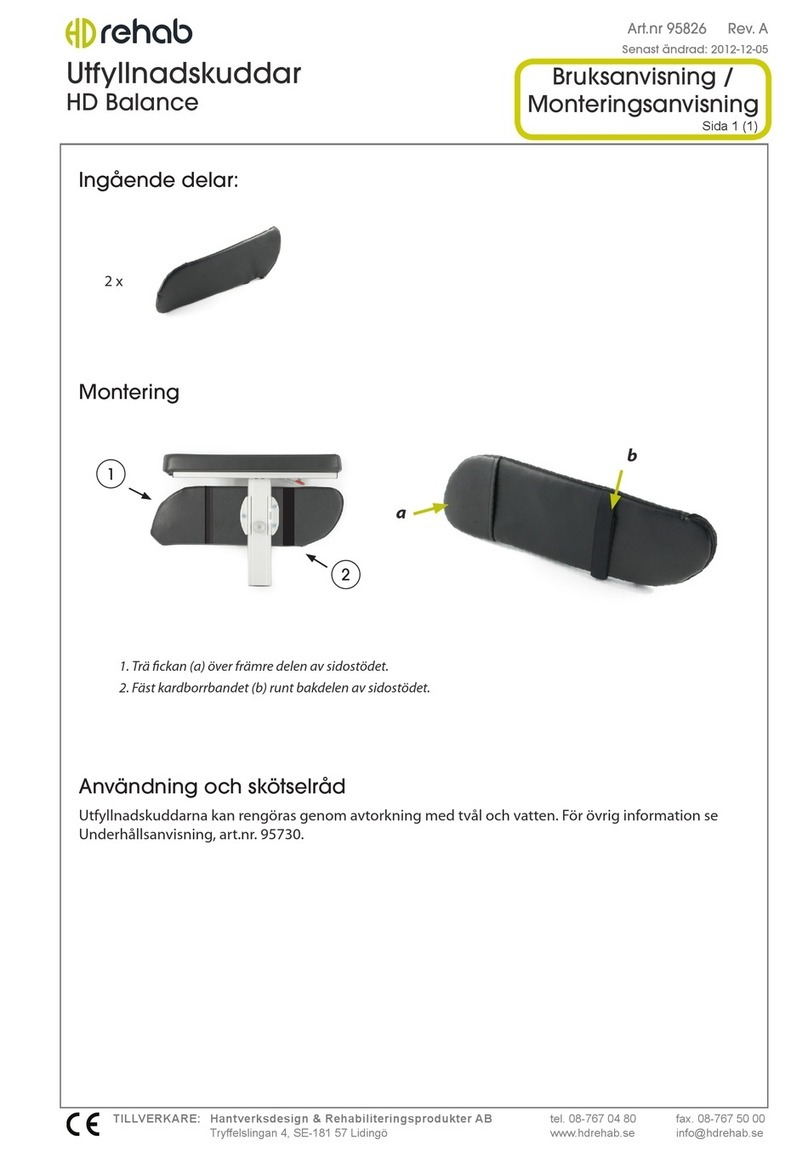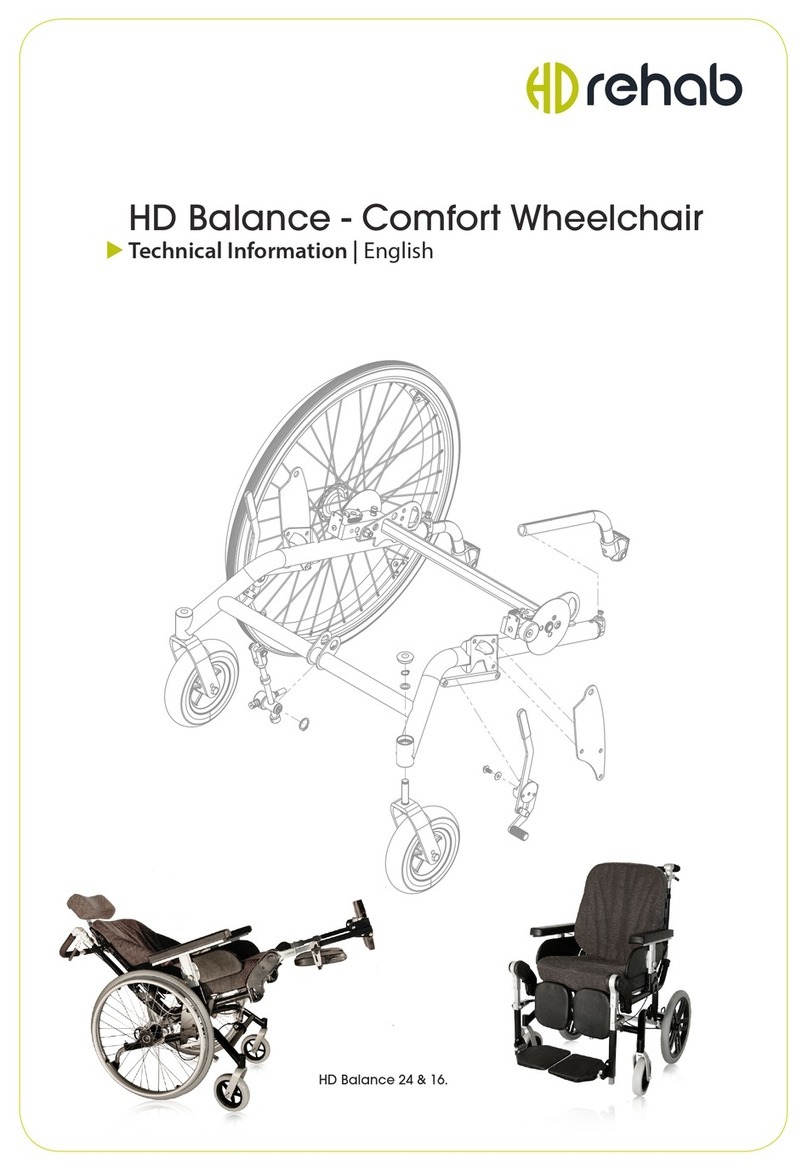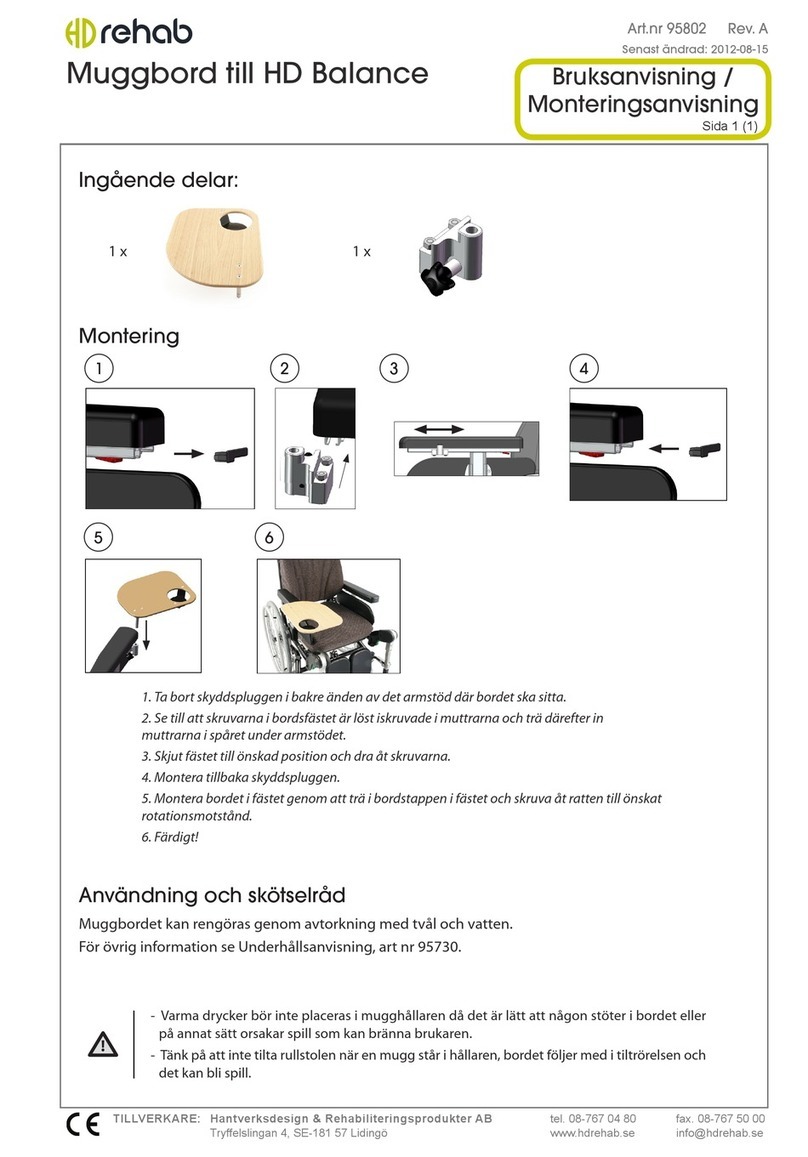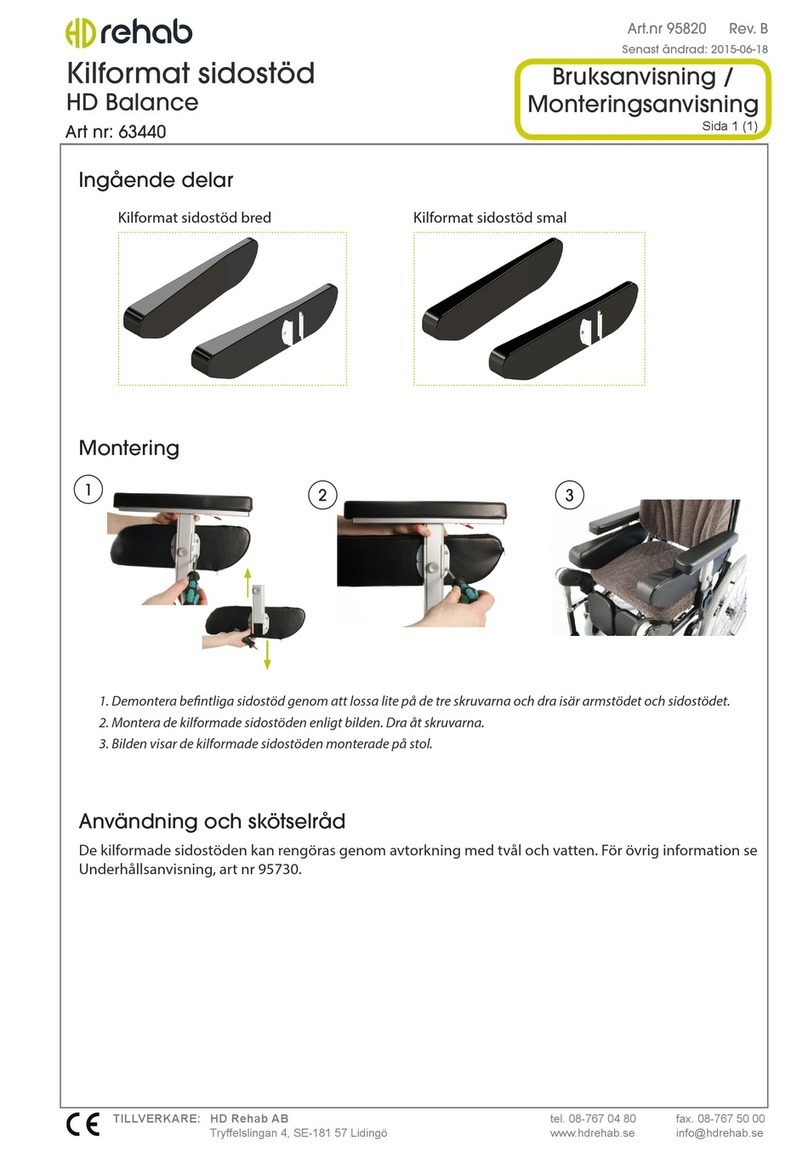
5
HD balance
2. GENERAL INFORMATION
HD balance is a class 1 CE labeled medical device.
2.1 Intended use - HD balance
The wheelchair model, HD Balance 24, is a manual wheelchair designed for users who can propel
themselves to a certain extent. The model can also be used by users who cannot propel themselves.
The wheelchair model, HD Balance 16, is a manual wheelchair designed for users who cannot
propel the wheelchair themselves.
Both models are intended for use by users in need of much comfort and support when seated. The
seat and back on both models can be tilted in various positions to give the user a varied position
during activity and rest. A varied seat position is very important! Note that prolonged sitting with-
out a position change can lead to discomfort and excessive pressure. If injury is suspected, search
for information regarding symptoms and contact the health care system.
A medical professional should always be consulted prior to using an HD-balance wheelchair. This
applies to the new and used wheelchairs. Note that a new prescription may be needed if a user’s
disability changes or new needs arise. All prescription and adjustment of the wheelchair must be
carried out by qualied personnel.
Where the wheelchair has several users, each patient’s specic needs must be taken into account.
In addition, the chair’s upholstery on the back and seat cushions must be washed or changed for
each user. Washing instructions are on the seat and cushion covers.
If the user has a pattern of movement/behavior that strains the chair excessively a strengthened
version must be used. This includes spastic users.
The wheelchair is approved for use as a seat during transportation in vehicles.
2.2. General safety aspects
HD wheelchairs are intended for use both indoors and outdoors. Before using the wheel chair, it is
important that users and carers are familiar with how the chair works and should be used.
Test the driving characteristics and features!
● Read all the instructions and ensure that the instructions are available. Note that deviations
may occur especially if the wheelchair is specially equipped/adapted. The wheelchair can also
be equipped with accessories and equipment from other suppliers.
● From a safety perspective, it is important that the maintenance instructions (see Section 8) are
followed. A good rule is to keep the seat clean and periodically test the controls and brakes.
● Especially when the chair has been transported, a further check can be good to note that no
cables or the like have been damaged.
● If damage is detected or any detail found to be missing, the seat must be taken out of service
until this is xed.
● The wheelchair should be operated and used judiciously to avoid unnecessary risks.
● Children should not operate the wheelchair without adult supervision.
● Be aware that certain items of clothing are not suitable for the user to wear as they may get
caught in the wheels. Be especially careful with scarves and similar items that can be tightened
around the user’s neck if they get caught.
● If the wheelchair is exposed to external heat sources such as sunlight, some parts may become
hot. Pay attention to this so that no user is harmed.
● Be careful with all wires so that they do not get damaged.
● The user might accidentaly slide out of the wheelchair, be aware of this. See info regarding belts.
RISK OF TIPPING
● The risk of the wheelchair tipping backwards will increase if the seat is equipped with an
increased seat tilt capacity. In these cases, the risk of tipping is always evaluated on an indi-
vidual basis. Remember, the risk of tipping also increases when bags are hung on the seat back,
especially if the seat is at the maximum backward tilt.
